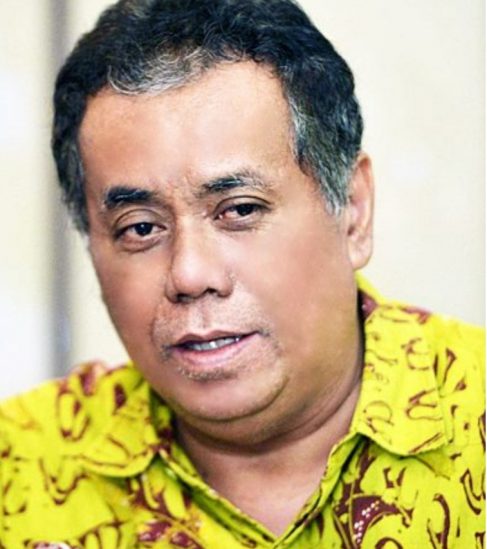Ari Kuncoro: The Path to Recovery
Nino Eka Putra ~ PR of FEB UI
DEPOK – (10/11/2020)
Professor Ari Kuncoro, Rector of Universitas Indonesia, released his article published by Kompas Daily, an Economic Analysis rubric, entitled “The Path to Recovery”. The following is the writing.
“The Path to Recovery”
Judging from the initial position, there are two alternatives to measure quarterly growth. First, comparing with the previous year and the second, versus comparing with last quarter.
The world before the Covid-19 pandemic (2019) and at the time of the pandemic (2020) were very different. Measurements using the method on an annual basis show how far Indonesia fell off its natural growth path before the pandemic. The method on a quarterly basis looks to see if there is a continuous improvement towards a natural growth path.
Growth trajectory
The Central Statistics Agency (BPS) announced that Indonesia’s annual economic growth in the third quarter of 2020 was minus 3.49 percent, better than in the second quarter of 2020 which was minus 5.32 percent. This contraction is deeper than the lower limit predicted by the World Bank (minus 2 percent) and the Government of Indonesia (minus 2.9 percent). This figure is not too surprising. Several indicators have shown weakness as a consequence of the strict large-scale social restrictions (PSBB) in DKI Jakarta.
The impact on the real sector is a decline in the Purchasing Manager Index (PMI) in September to 47.2 and only edged up to 47.8 in October. In fact, in August, the figure had reached 50.8, which means that there has been expansion.
This is consistent with the Consumer Confidence Index (IKK) issued by Bank Indonesia. The CPI in September fell to 83.5 from 86.9 in August. The decline occurred in all expenditure groups. Consumer confidence in buying durable goods has decreased, especially in the income group above IDR 5 million.
This is reflected in the growth in annual consumption in the third quarter of 2020, which is actually expected to be better. Finally, consumption grew by minus 4.04 or slightly better than in quarter II-2020 which was minus 5.52 percent.
As usual, indicators in the financial sector move ahead of real sector indicators if there are changes in expectations (Dornbusch, 1996). The share price went up when the DKI Jakarta Provincial Government declared its return to the transitional PSBB on October 12. JCI in trading at the beginning of the week, Monday (12/10/20), opened in the green zone, up 0.48 percent to 5,078.12.
Foreign investors booked a net purchase of IDR 11 billion in the regular market with a daily transaction value of IDR 1 trillion. What happened then, the rupiah tended to strengthen. The combination of a trade balance surplus, the Job Creation Law, and better handling of the Covid-19 pandemic has increased the flow of portfolio capital to Indonesia.
Report from the Covid-19 Handling Task Force, at the end of October, cases recovered cumulatively 81.6 percent, higher than the world average of 73.12 percent. As for active cases, 14.9 percent, lower than the world average of 24.23 percent. However, the deaths were 3.4 percent versus 2.63 percent of the world average.
The handling of the pandemic appears to be a dashboard for international portfolio capital movements. Indonesia is an attractive alternative, especially with the prospect of a second lockdown in Europe due to the second wave of the Covid-19 pandemic.
Employment indicators
The success in controlling Covid-19 is praised by the World Health Organization (WHO). However, the central and local governments must remain vigilant about the possibility of positive cases increasing again, especially after last week’s long holiday.
The reason is that the movement of variables in the real sector is determined by the perception of health, especially the upper middle class. The purchasing power of the upper middle class is stored in banks. In August, third party funds (DPK) for deposits of more than IDR 2 billion (56 percent of total DPK) grew by 14.1 percent.
The upper middle class will increase spending as health indicators improve. This will increase the leverage of the government’s stimulus so that the economy moves faster to create job opportunities.
Meanwhile, the labor indicator more influences the spending behavior of the lower middle class. BPS announced, as of August 2020, there were 29.12 million people of working age or 14.29 percent affected by the Covid-19 pandemic. This amount is large enough to change consumption behavior. As a result, worries about termination of employment have increased so that people will save every rupiah they receive. This behavior slows down the economy.
Like most risk-averse societies, they are not to blame as increased uncertainty will add to caution. This can be seen from the DPK accounts below Rp. 100 million (14 percent of total DPK) increasing from 4 percent in July to 6.3 percent in August.
Take advantage of momentum
The economic growth and employment data only captures the situation until August 2020 before there are improvements in health indicators for handling Covid-19. Although there are concerns about an increase in new cases, significantly, the momentum of economic recovery is evident from the enthusiasm of citizens to travel on the long holiday last week.
Quarterly gross domestic product (GDP) growth data shows the distance to return to a positive growth trajectory. GDP for the third quarter of 2020 grew by 5.05 percent against the second quarter of 2020, which means there is improvement. However, the cumulative quarterly growth that was already underway still generated minus 2.03 percent. This figure illustrates how hard the effort is to return to the zone of positive growth.
Without reducing vigilance, the turning point for handling the pandemic in a better direction since the end of October can be an asset to make perceptions of health better in the fourth quarter of 2020. Furthermore, this will be the preparation for recovery in 2021. (hjtp)
Source: Kompas Daily. Edition: Tuesday, November 10, 2020. Economic Analysis Rubric. Page 15.

